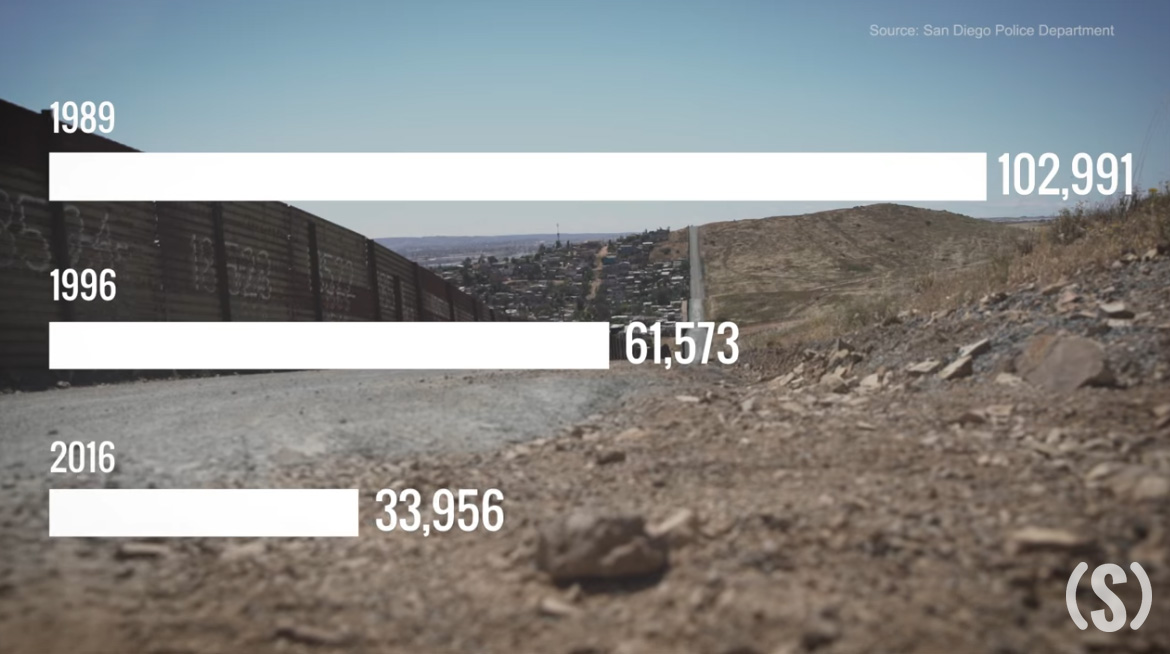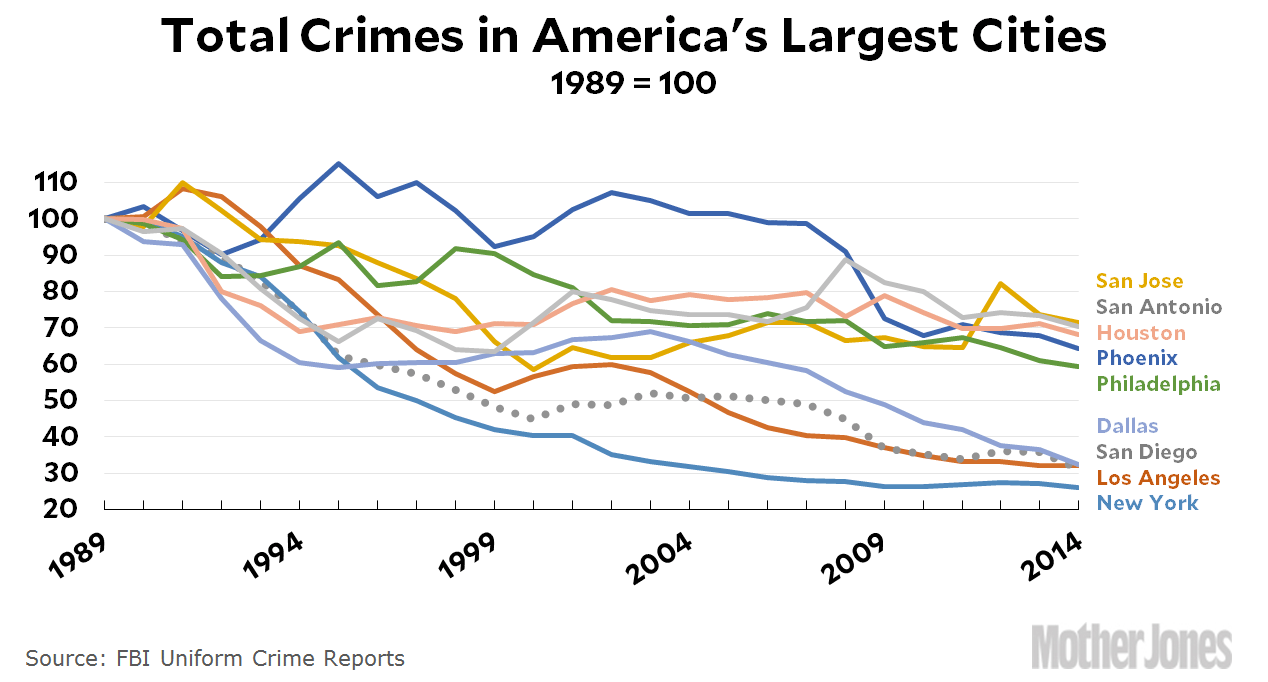The Republican health care bill was surrounded by so much brazen lying that it’s almost a relief to highlight a case of ordinary old misleading statistics. Here’s the Daily Signal showing us how much crime plummeted in San Diego after a border wall was built in the early 90s:

Not bad! Of course, crime was plummeting all over the country during this period. I’m too lazy to dredge up the 2015-16 figures, but here are the FBI crime stats for our biggest cities for 1989-2014. Normally I’d show crime rates, but the Daily Signal used total crimes so I will too:

There are basically two buckets here: a group of cities where crime fell by about 70 percent (bottom) and a group where crime fell by about 30 percent (top). San Diego is a good performer, but so are Dallas, Los Angeles, and New York. That’s three southwestern cities and one northern city. The top group of mediocre performers includes three southwestern cities and two northern cities.
So did San Diego’s wall make a difference? It sure doesn’t look like it. And that’s despite the fact that everyone agrees it significantly dented the rate of illegal border crossings.
The refreshing thing here is that this is just an ordinary old misdemeanor case of deception via omission. It almost makes me feel nostalgic. Hell, it might not even be a case of deliberate deception. It’s possible that reporter Kelsey Harkness had no idea that plummeting crime was a nationwide phenomenon. Not everyone reads Mother Jones, after all.













